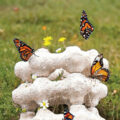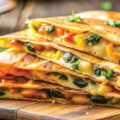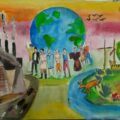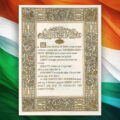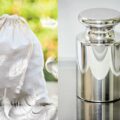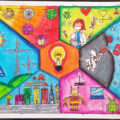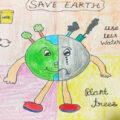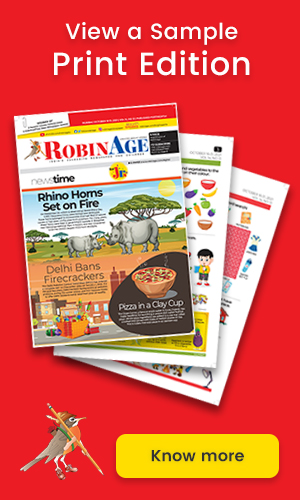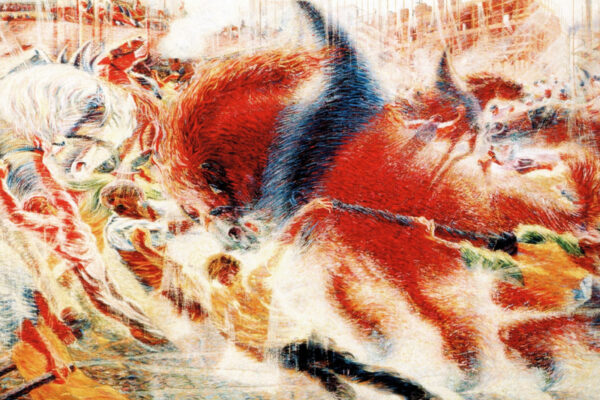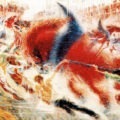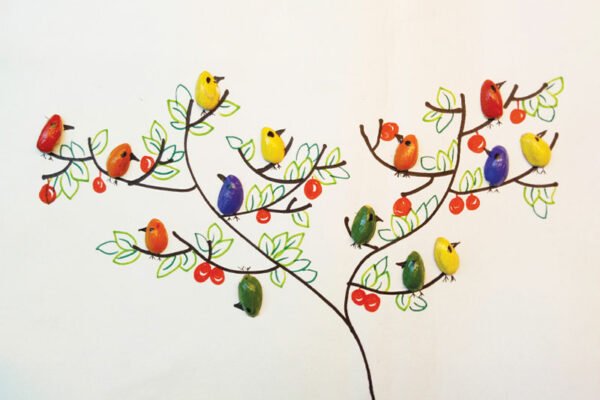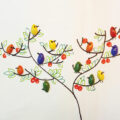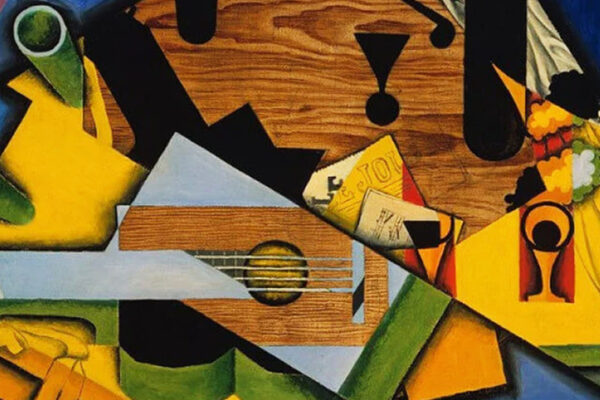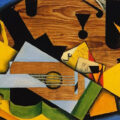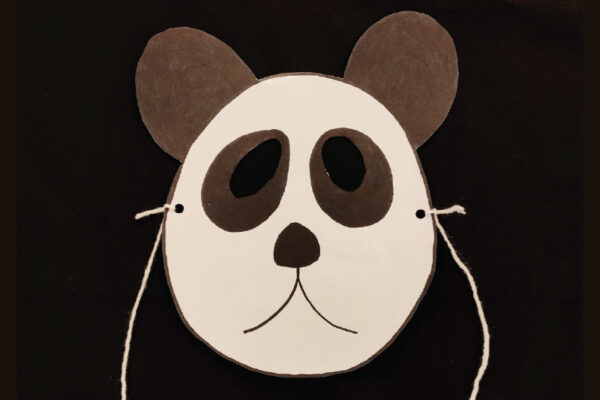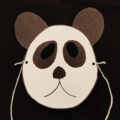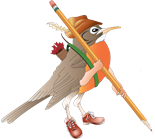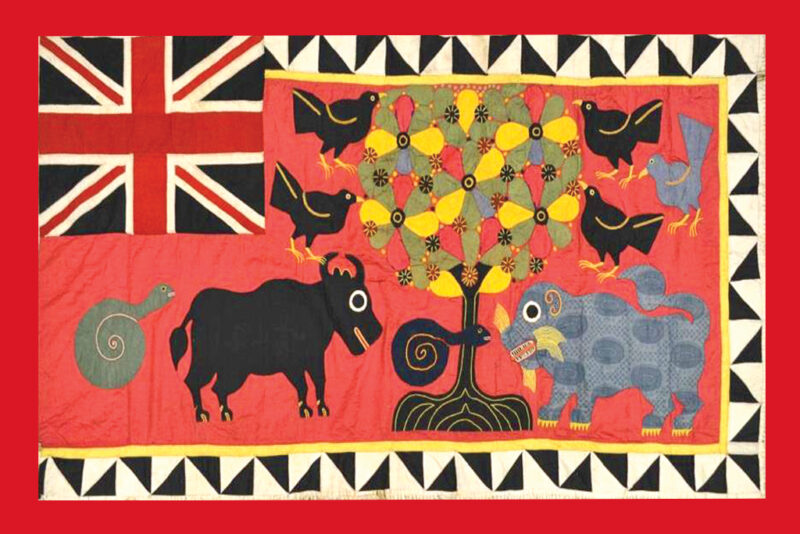
Asafo flags are visual representations of military organisations in Fante communities known as ‘Asafo’. Each Asafo or ‘company’ has its own flag, name and number. From 1896 (when Ghana was conquered by the British) through to 1957 (when Ghana regained its independence), these flags included a version of the British flag in one corner.
These flags are made using cotton cloth and are stitched, appliquéd or embroidered upon. The flags represent specific Ghanaian proverbs and contain characters like animals or humans who tell the story of the proverb based on the company’s history.
Here are a few proverbs you can use to create your own Asafo flag:
‘Procrastination is the thief of time.’
‘Kill two birds with one stone.’
‘It takes two to tango.’
‘Make hay while the sun shines.’
‘The frog does not drink up the pond in which it lives.’
‘As you sow, so shall you reap.’
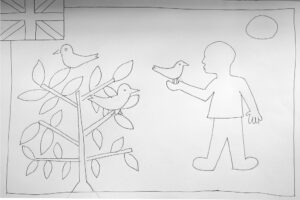
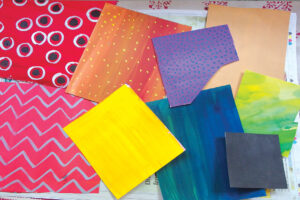
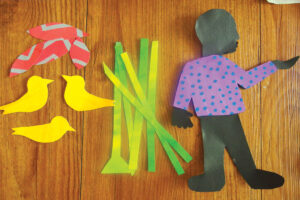
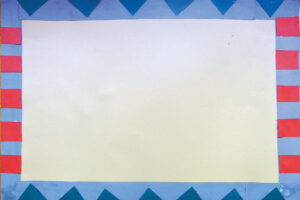
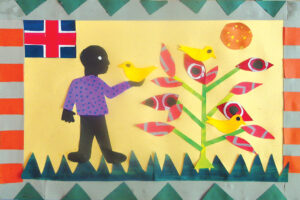
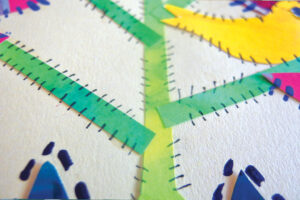
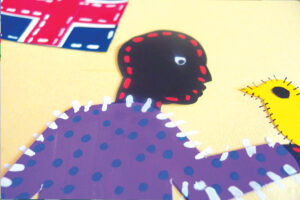
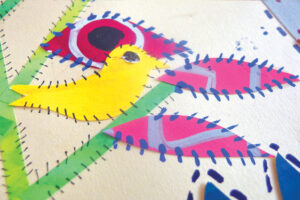
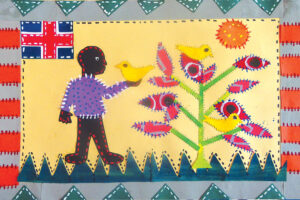
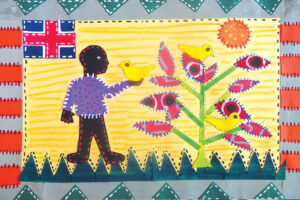
MATERIALS
- 1 sheet of white chart paper
- Coloured chart paper
- Scraps of old chart paper
- Black pen
- Poster paints
- Paintbrushes
- Pencil
- Scissors
- Glue
METHOD
- In this flag, we have used the proverb, ‘A bird in hand is worth two in the bush.’ Before you start, break down the proverb into the elements that you have to draw. For example, in this proverb, we need 3 birds, 1 human, 1 bush, the border and a British flag in the corner. Draw these basic figures in pencil. Give your artwork a border and keep space for the flag in the top left corner. Outline the figures with a black pen. This sheet will give you a basic idea of what your flag will look like. When you are drawing, remember that the figures are going to be created using paper cut-outs so keep them simple, clean and neat. Draw in a way that the main figures, like the human and birds, can be cut properly.
- Take a few scraps of paper and paint them in different textures, prints and styles like polka dots and lines. Since the Ghanaian people used pieces of cloth and natural colours, keep your colours simple and earthy. Don’t use fluorescent colours.
- Cut out the figures drawn on the white sheet, trace them on the coloured scraps of paper and cut these out too. Trace the human on a black scrap of paper and cut it out. Then, using another patterned scrap of paper, trace and cut out only the upper body to create a t-shirt as shown. Cut out birds, branches of the tree and leaves. You can also add grass to the final flag. Use as much pattern as possible.
- Take a coloured sheet of chart paper and first stick a border on it. Use pieces of coloured paper to make a design on the border.
- Stick everything else in place as per the proverb that was drawn on the white sheet. Make the British flag out of coloured paper too and stick it in the top left corner.
- Use a fine black pen to make fine and short lines on the edges of the tree and birds. These lines will recreate the effect of appliqué as they resemble stitches. Appliqué is a form of ornamental needlework in which pieces of fabric are sewn or stuck onto a larger piece to form a picture or pattern.
- Use paint to make thick and short stitch-like lines on the edges of the other objects. Make these stitches all over your flag.
- Lastly, add lines to the background of the flag. Your flag is complete.
ACTIVITY: Designs for Africa
Create a design for an Asafo flag.
Prover Chosen: ______________






